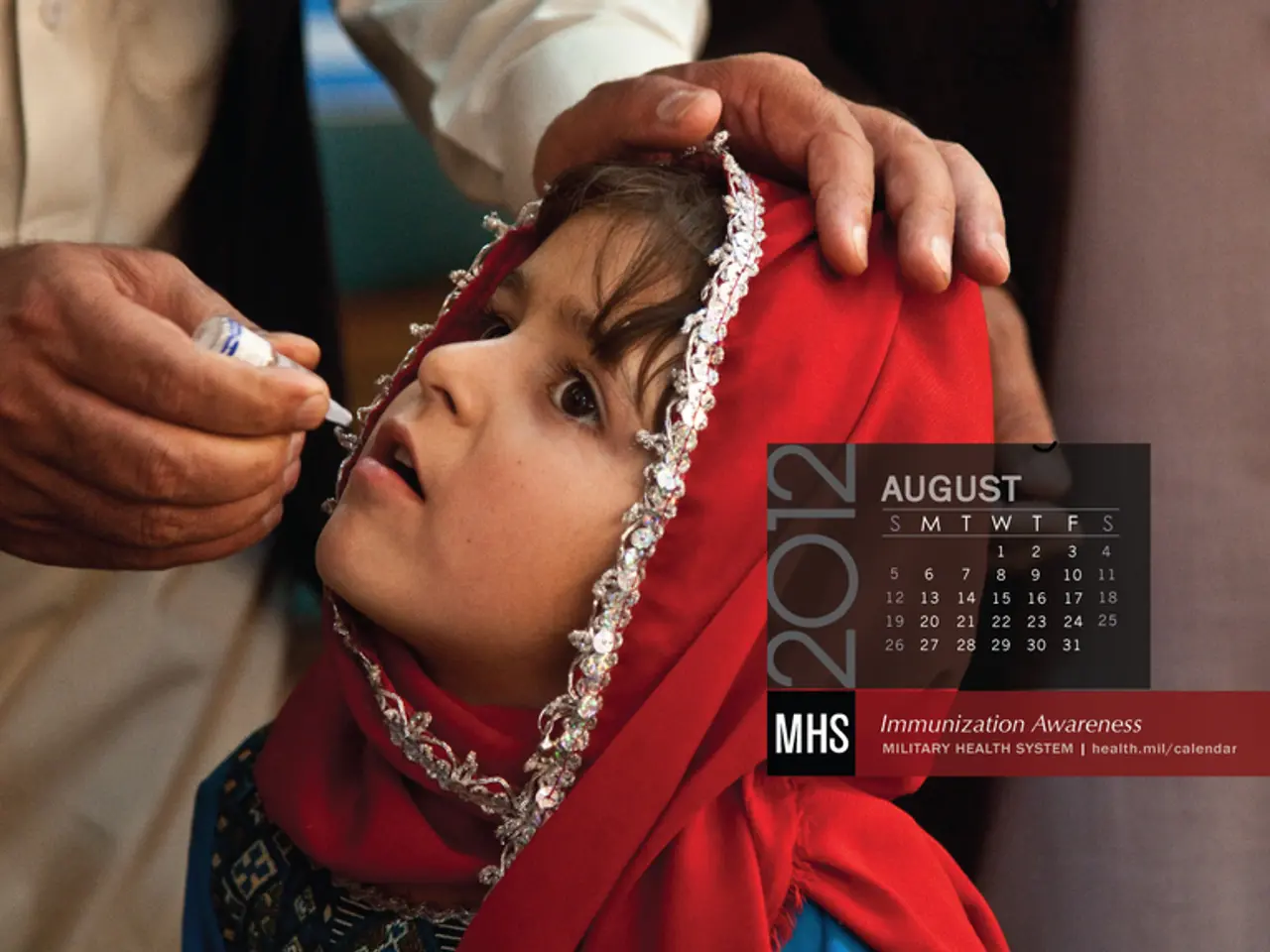Cervical cancer transmissibility: Exploring HPV infection and additional risk factors
Cervical cancer, primarily caused by the Human Papillomavirus (HPV), is a serious health concern, but there are steps individuals can take to reduce their risk.
HPV Vaccination
The most effective way to prevent cervical cancer is through vaccination. The HPV vaccine protects against the high-risk HPV types responsible for about 90–99% of cervical cancers, especially HPV16 and HPV18. Vaccination is recommended primarily for preteens aged 9 to 12, with catch-up vaccination available up to age 26, and some adults 27–45 after consultation with a doctor.
Regular Cervical Cancer Screening
Routine screening with Pap tests (Papanicolaou smear) and/or HPV tests helps detect precancerous changes early, allowing for timely treatment to prevent cancer development. Current guidelines recommend starting screening at age 20 or 25 (varies by region), with intervals depending on test type. High-risk HPV (hrHPV) screening every 2 years has demonstrated superior outcomes in reducing cancer risk compared to Pap testing alone.
Safe Sexual Practices
Using condoms consistently and correctly during sexual activity reduces HPV transmission risk, though it does not eliminate it completely since HPV can be spread through skin-to-skin contact. Limiting the number of sexual partners also lowers exposure risk.
Healthy Lifestyle
Avoid smoking, as it increases cervical cancer risk. A diet rich in fruits, vegetables, whole grains, and legumes (such as the Mediterranean diet) may help lower risk. Regular aerobic exercise is also associated with reduced cervical cancer risk.
Additional Points
Combining vaccination and screening provides the strongest protection since the vaccine does not protect against all oncogenic HPV types, and screening detects abnormalities caused by any HPV infections acquired. Early HPV vaccination programs with high coverage can contribute to earlier elimination of cervical cancer as a public health problem, especially when paired with effective screening.
In summary, the best approach is to receive the HPV vaccine at the recommended ages, participate in regular cervical cancer screening, practice safe sex, and maintain a healthy lifestyle to significantly reduce the risk of HPV infection and cervical cancer.
Cervical cancer screening is important for detecting cervical cancer early, which may mean it is easier to treat. The CDC recommends the use of condoms, limiting sexual partners, being in a long-term, mutually monogamous relationship, and attending routine cervical cancer screening to reduce the risk of getting or spreading HPV.
It's essential to note that HPV is the most significant risk factor for cervical cancer, but cervical cancer itself is not contagious. HPV can pass between people through sexual contact.
[1] Saslow D, Solomon D, Lawson HW, et al. American Cancer Society, American Society for Colposcopy and Cervical Pathology, and American Society for Clinical Pathology guidelines for the management of abnormal cervical cancer screening tests and cervical cancer. CA Cancer J Clin. 2012;62(1):30–60.
[2] Rodriguez AA, Rodriguez CA. Human papillomavirus and cervical cancer: global burden and prevention strategies. Am J Obstet Gynecol. 2010;202(3 Suppl):S1–S9.
[3] Markowitz LE, Koutsky LA, Wheeler CM, et al. Human papillomavirus vaccine: recommendations for use in the United States. MMWR Recomm Rep. 2007;56(RR-14):1–31.
[4] de Sanjose S, Munoz N, Bosch FX, et al. Human papillomavirus and cervical cancer: a review of vaccines in development. Vaccine. 2006;24(33–34):5253–5265.
[5] Herrero R, de Sanjose S, Munoz N, et al. The impact of HPV vaccination on cervical cancer incidence in developed countries: a systematic review. Vaccine. 2014;32(28):3231–3241.
- Despite cervical cancer primarily being caused by the Human Papillomavirus (HPV), there are steps individuals can take to reduce their risk, such as getting the HPV vaccine.
- The HPV vaccine, when received at the recommended ages, protects against the high-risk HPV types responsible for about 90–99% of cervical cancers, like HPV16 and HPV18.
- In addition to vaccination, participating in regular cervical cancer screening is crucial for detecting cervical cancer early, which may mean it is easier to treat.
- Safe sexual practices, such as using condoms consistently and correctly, can also help reduce the risk of HPV transmission, although it does not eliminate it completely.
- Adopting a healthy lifestyle, with a diet rich in fruits, vegetables, whole grains, and legumes, regular aerobic exercise, and avoiding smoking, can further lower the risk of cervical cancer.
- Combining vaccination and screening provides the strongest protection, as the vaccine does not protect against all oncogenic HPV types, and screening detects abnormalities caused by any HPV infections acquired.
- While HPV is the most significant risk factor for cervical cancer, it's important to remember that cervical cancer itself is not contagious, but HPV can pass between people through sexual contact.




